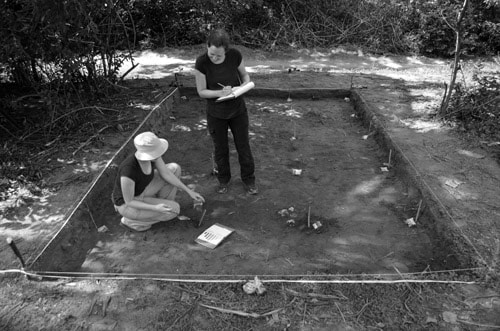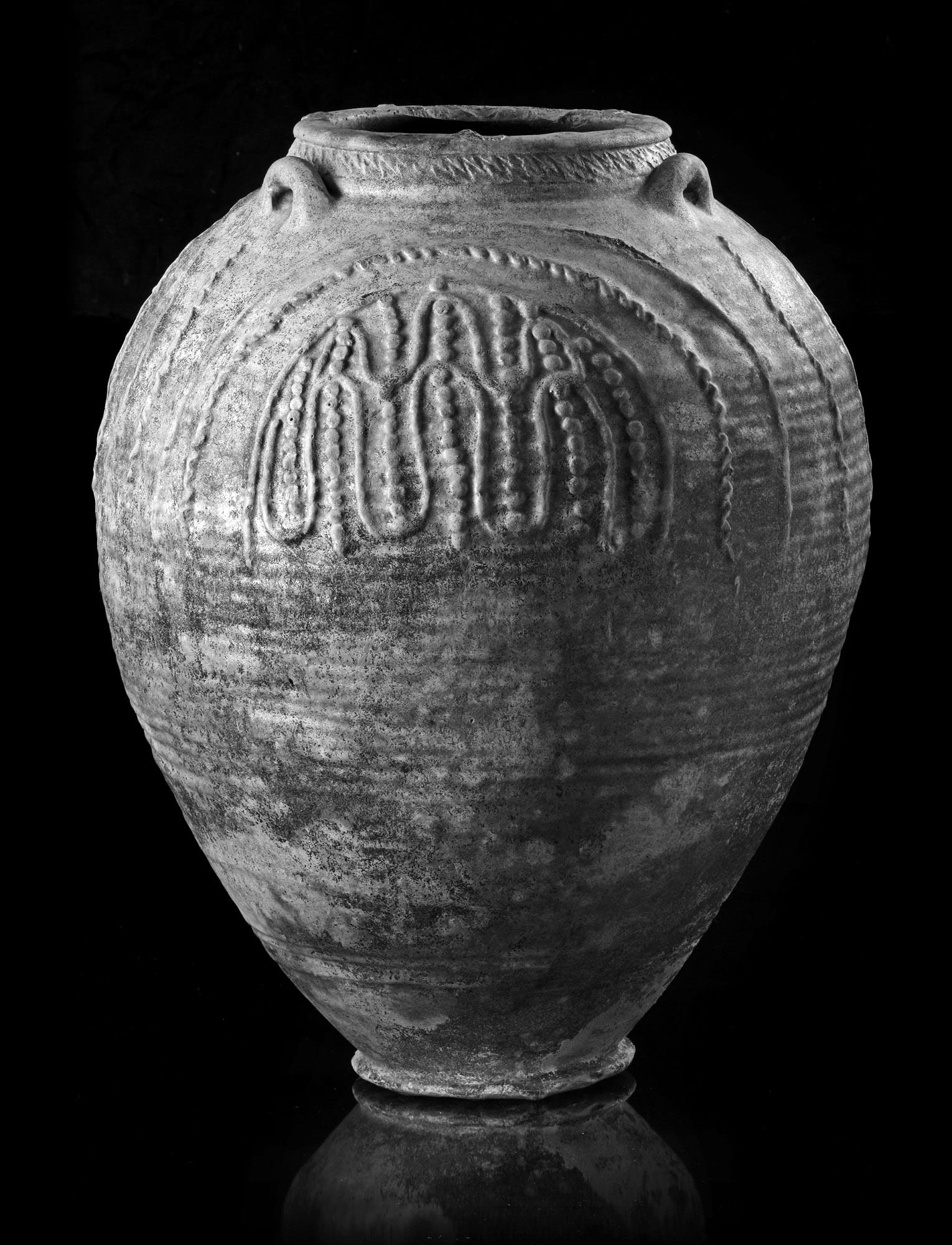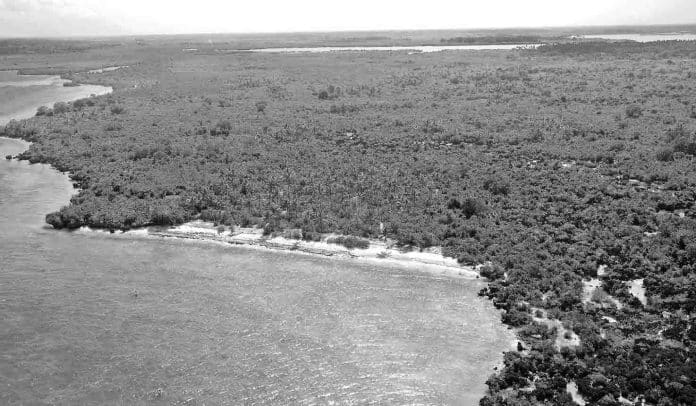Unguja Ukuu A Tiny Community on Unguja Island – Zanzibar
On Unguja island in Zanzibar, Tanzania, is the small settlement of Unguja Ukuu.
Unguja Ukuu History
The Unguja Ukuu archaeological location on Zanzibar Island has yielded various antiquities and proof regarding Unguja Ukuu’s long history. Artefacts discovered here are from different parts of the globe: pottery coming from the Near East, Far East, the Southern region of the Mediterranean, and India. More items included glass, rings, iron artefacts, ivory, coins, and various animal remains.
Guests to this place, situated between the East African coast and the Indian Ocean’s edge, left evidence about the place being a primary trading hub. Contrary to the mainland, merchants from other countries across the globe influenced this site, with each leaving behind a mark. Because of the trading here, early urbanization is noticed among the first trading posts in East Africa.
The location of Unguja Ukuu was essential in creating an unconventional community strategy where inhabitants depended mainly on imported foods and products since farming was not the primary source of livelihood. With excavations going on, a broader collection of artefacts emerged, adding to this place’s complex history.
Significance of Unguja Ukuu Zanzibar
The antiquities discovered are proof that this area experienced many years of trade on the Indian Ocean and the coast of East Africa. Unguja Ukuu is the first early trading post on the coast. The site has the earliest artefacts among all islands in the region, originating from the 6th century. It is where initial Islamic influence approached ashore, evidenced by the mosque remains.
There is proof of early modernization and global trade happening. From its name, Unguja Ukuu meaning a “central place” among the Bantu, recognizes its significance in trade. The site also offers insight into the initial contact between people from the ocean and Swahili people.
Unguja Ukuu Location
Zanzibar Island is the home of Unguja Ukuu, an archaeological site. Zanzibar lies centrally on Africa’s east coast and southern part of the equator. With the land situated 25 miles, the Zanzibar Channel, with a depth of 30 to 40 metres, separates the site from the continent of Africa.
Zanzibar Island is the biggest among those in the archipelago. Unguja Ukuu’s site sits on 16 hectares and lies between a creek and a village. The site is along the island’s southwestern side. Its coordinates are 39.358° East, -6.2987° North.
Unguja Ukuu Research Background and Excavations Details
Unguja Ukuu makes one of the two sites with proof of ancient coastal pottery, ceramic bead grinders, and Islamic pottery from Sassania, whose discovery goes back to the 9th century. The site joins Koma, Mafia, and Kwale, having evidence of ancient iron working pottery. This precedes traditional Tanaware.

Additionally, this site had artefacts dating back to between 500-700 A.D., including items from the Maghreb region, the state of the Romans, and India. By 1920, Pearce revealed his observations, including the ruins of a mosque. Apart from what he discovered, he also conducted interviews with informants and learned of 500 gold pieces found and taken by Arabs many years back. The coins bearing a Cufic inscription were minted in Baghdad about 798 to 9 AD. This marked the initial recognizable date attached to an artefact from the area.
Among the few surviving monuments on the East African coast was a stone well. Some scholars credit Indian natives of Arab origin for the area’s architecture. Neville Chittick visited Unguja Ukuu for the second time in1966 – the first one had been the previous year. He narrated collecting antiquities on the surface without any digging.
Most discoveries included pottery sherds. A Chinese stoneware with a green coating and ornaments stood out among the sherds. Much of his findings included Islamic pottery from Sassania, mainly from Iran (Ctesiphon and Nishapur) dating back to the 8th and 9th centuries.
Horton and Clark explored the site across15 hectares in1984. Discovered more than two meters of middens, offering proof of ironworking, animal bones, daub, bead-grinders, and glass, including local and pottery from foreign countries. Although pottery from abroad made just

below 5 percent of the recovered sherds, it included Islamic pottery from Ssasania and non-glazed wares, Chinese Changsha stoneware, Guangdong Dusun jars, and Zhejiang Zueh Yao wares in green.
Apart from these, a piece of Islamic ware with white glazing was also discovered. The settlement was estimated to be inhabited from the 8th-10th century to the 16th century. Syse and Juma discovered Chinese stoneware, two shell middens, Islamic pottery, and a likely stone fort along the east. By 1991, Chami excavated deeply to reveal the presence of ancient Iron age shards at the site.
Dating matches the 5th and 6th centuries. Items included slipware from the fallen Roman Empire pottery from African Red and Egypt. Jeffrey Fleisher and Stephanie Wynne-Jones (2011) applied radiocarbon data to the shards discovered, including neighbouring islands.
According to their discoveries, ceramicware was from the early 6th century. The new dating pushed back original dates and gave Unguja Ukuu profound and lingering history compared to the previous considerations.
Dating and Stratigraphy
The landscape of this part of the island includes coral limestone. Some places have intense smooth soil where retrieval of most settlement artefacts happened. Eclectic landscape elements surround the site, including a peninsula point, creek, flat areas, and ridges.
As time passed and technology improved, more aggressive discovery techniques were applied, including coring. However, core drilling is questionable in particular situations because of inconsistencies in topography that affect the overall chrono-stratigraphy making up soil colouration on the site. A colossal excavation project began and led to a discovery of various significant artefacts with structural details giving a better picture of Unguja Ukuu’s social mapping.
SAREC sponsored a regional program known as “Urban Origins In East Africa”. The program studied Zanzibar’s archaeology throughout the four seasons, from 1989 to1993. By this time, significant excavation and discovery happened at a much larger scale than before.
The variations in the typography of the regions on the site led to splitting it into numerous areas according to letters measuring 410m² and exploring 11,500m² worth of sifted deposits. Zone A measured2 x 1 x 1.7metres with 9 identified layers. In layer 2, with a depth of 9–30 centimetres, there was a discovery of Sgraffito pottery incisions and porcelain bowl fragments in blue-white. Layer 4 with a depth of 40–70 centimetres having foreign pottery sherds of Sgraffiato in pink, including green monochrome, dating back to between 1430 and1650 A.D.
In layer 5, with a depth of 70 to 86 centimetres, other pottery was discovered. However, there was a discovery of white Tang dynasty stoneware dated 618 to 908 A.D. In layer 6, having a depth of 86–100 centimetres, various pottery shards were discovered in blue-green, including charcoal samples confirmed to be from 600 to 770 A.D after testing. Preceding layers showed proof of pottery until finding a grave with two bodies in Layer 9 with depth between 1.42 to1.17 centimetres, suggesting dates from 1440 to1600 A.D.
Many of these sites resemble, but some stood out for yielding significant discoveries. Unit B from Layer 3, with a depth of 30–50 centimetres, had findings including brown fabrics, glazed ware in blue-green, plus Chinese stoneware with olive-green glazing. Layer 4 had a depth of 5–66 centimetres. Notable items discovered at Unguja Ukuu included:
- Changsha stoneware
- polychrome ware from the Islamic era
- Six coins presumed to be copper.
- Layer 6 had a discovery of additional copper coins.
Layer 8 yielded Changsha stoneware with paintings from 700 and 800 A.D. In layer 11, with a depth of 135 to165 centimetres, the discoveries included rare pink earthenware with thin walls. Layers 14 and 15 with a depth of 185 to 270 centimetres yielded ancient glass pieces. Discoveries from units C to E were mainly charcoal and shards. However, at a depth of 21 centimetres in Unit C, a grindstone portion was unearthed.
Units F to I discoveries. With a depth of 35 to 44 centimetres, Unit J provided a path to a Longquan celadon bowl fragment in green from the Ming dynasty originating from between the 14th and 16th centuries. Layer 6, with a depth of 55 to 64 centimetres, provided four tiny silver coins. Layer 12 with a depth of 91 to131 centimetres unearthed 7th-century “Susaware” fabric. Layer 14, with a depth of 131 to141 centimetres, revealed proof of the late Roman era toward the end of the 5th century. There was the discovery of a juvenile skeleton in Unit K of Layer 8 with a depth of 50 to 60 centimetres.
These are a few of the excavated unit sites. The excavation was massive, making it difficult to put every discovery here. Most units had charcoal, pottery shards, animal fossils, and middens, contributing to the previously done work. Unguja Ukuu participated prominently during local and global trade during that time.
Discoveries and antiquities • Glazed pottery • middens of basal shell in two places • Sasanian Islamic pottery and Chinese stonewares, stone building • discovery of about 900 yo 1866 Iranian gold coins • Glassware, alabaster, beads, ancient iron working pottery, and multiple metals • African red slipware from the ancient Rome • ancient iron age shards.
Significance of the Unguja Ukuu Discoveries to Broader Discussions
Abbasite dynasty golden Cufic coins were important for being the earliest proven dating of items from this coastal area. Some stone vessels, glass material, pottery, and antique beads originated from the Persian Gulf, the Mediterranean, northwestern Europe, and India were discovered.
Trade links were necessary for the urban development of the Indian Ocean area. The ancient trade ports on the coast of East Africa were secluded from the benefits of their proximity to the sea and location from the mainland. The factors promoted favourable trading centres. It explains why earlier writers have talked about the world’s influence on Unguja Ukuu, virtually without tradition and personal identity.
Background
Some people in the community allege Shirazi origin, although the stories can’t be ignored. These people represent the complexity of 19th-century identity politics, where Shirazi identity counterbalanced Arab superiority.
In Unguja Ukuu’s history, Mohammed wa Joka, a landowner from way back, was famous in various local stores and folklores. Legends have it that he could see the future and could spell the village, making it disappear. Additionally, his magic could tell anyone who could harvest his coconuts without permission.
For more articles related to regions of Tanzania click here!

































